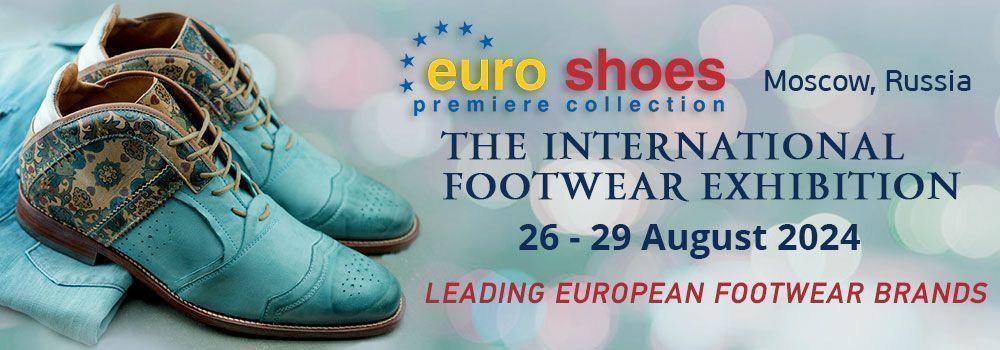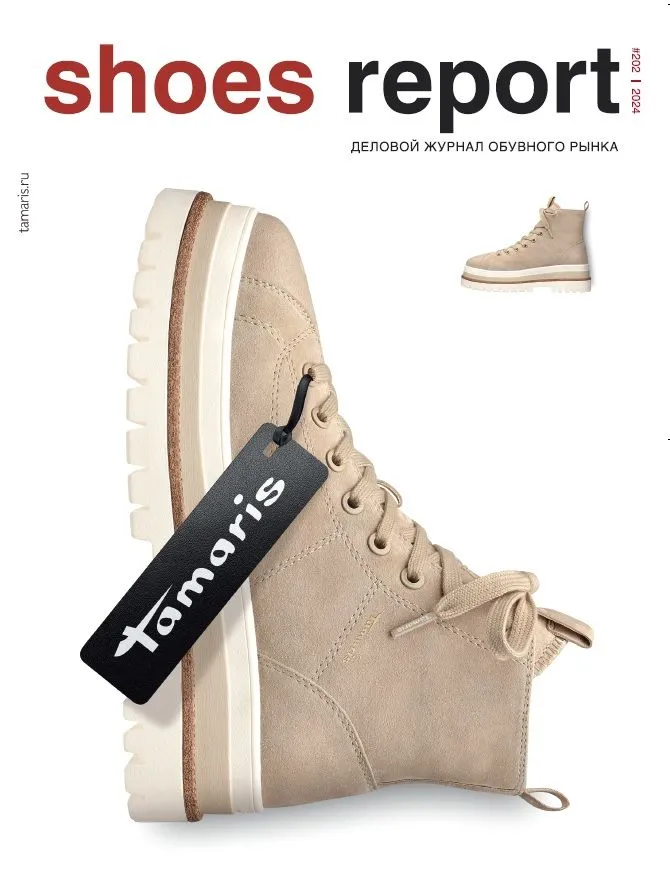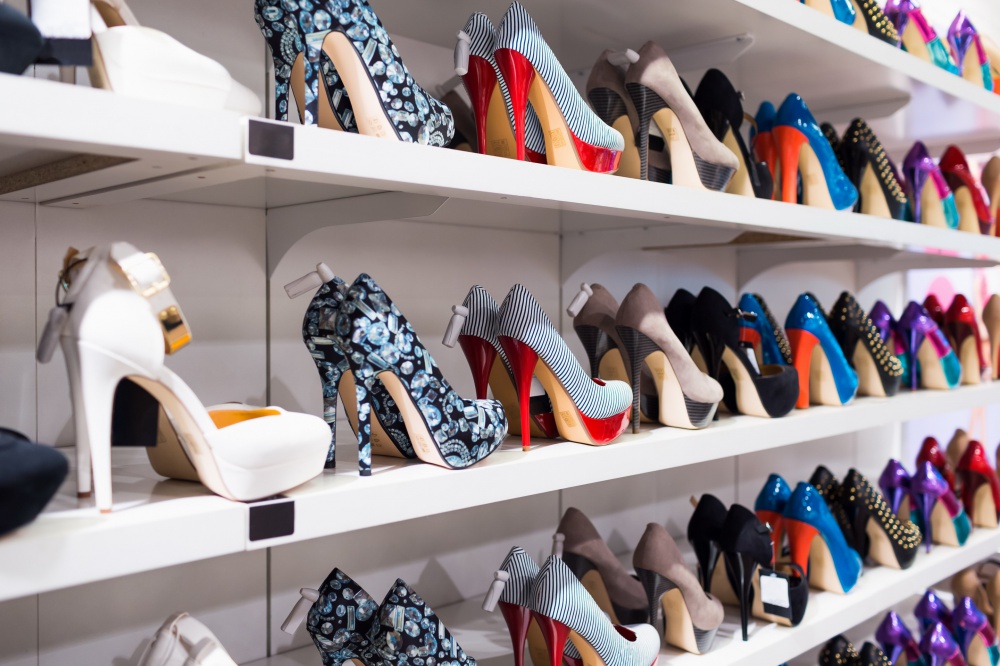
The enemy will not pass! Theft protection systems for shoe retail

According to the annual study The Global Retail Theft Barometer ("The Global Retail Theft Barometer"), shoes are on the top list of the most frequently stolen goods in retail. It is impossible to calculate a thief even at the entrance to the store: statistics show that the social status, age and gender of the dishonest buyer can be very different. Experts know how to protect your store from intruders and reduce losses from theft Shoes Report.
.jpg) Andrey Labytsin - Commercial Director of SM TRADE.
Andrey Labytsin - Commercial Director of SM TRADE.Has been operating in the retail market since 2001. He started as a sales manager for the SM TRADE company, which is a leader in the supply, installation and maintenance of anti-theft solutions in retail. In 2011, Andrei Labytsin was appointed commercial director of SM TRADE LLC.
SM TRADE Company, a leader in the supply, installation and maintenance of anti-theft solutions in retail, has been operating in the security systems market since 1997 of the year. Today it represents the most high-quality and innovative equipment of leading world manufacturers - Sensormatic (USA), Gateway (Sweden), Xtrim (Poland). The partner network of the company includes more than 320 companies in 80 cities of Russia. Among the customers of SM TRADE are international, as well as the largest federal and regional retail chains, included in the TOP-100 of Russian retail.
EAS systems: types and differences
The format of the retail facility primarily affects how “protection” from thieves in a shoe store will be organized, and how serious it will be. It’s one thing when only half a pair is displayed in the hall, and the layout gives the buyer only an idea of the assortment, and to get the right model and size he needs to contact the seller. And it’s a completely different matter when the entire “warehouse” is located directly in the trading floor, and all pairs of shoes are laid out in it and boxes with all sizes are presented. This format is more risky: on the one hand, an open display and the ability for the buyer to choose the right product themselves can increase sales, but on the other hand, these same factors can cause an increase in theft. Trade objects of this format especially need reliable protection.
To prevent theft in shoe stores, a whole range of technical solutions is used, and anti-theft systems (EAS systems) play a large role in it. They include several components: antennas installed at the store entrance / exit, rigid sensors and labels attached to the goods, as well as pullers and deactivators, with which sensors and labels are removed from the goods if they are paid at the checkout. Anti-theft systems work as follows: the transmitter antenna emits a sequence of pulses that act on protective labels, forming an electromagnetic field. The receiving antenna picks it up and, when someone tries to take out the goods illegally, signals about it.
Today, EAS systems of several technologies are presented on the market (acoustomagnetic, radio frequency, electromagnetic, RFID), but Russian shoe retailers actively use only two of them: acoustomagnetic (AM) and radio frequency (RF).
Acoustic EAS Systems long known for their high response rate (up to 95%) and excellent noise immunity. AM-sensors work even on foil and metallized surfaces, and AM-labels (rectangular marks of white and black color or with a false bar code) are more durable than others, so it is more difficult for thieves to damage them. Sensormatic has been the world leader in the production of acoustic magnetic anti-theft systems for over 40 years.
RF systems they have a lower response rate (about 90%), they are more sensitive to noise and interference, and RF sensors can easily be removed with pullers that the thief can bring with him to the store. However, RF systems have some important advantages: a large selection of consumables (for example, RF labels can be different in shape (round, square, in the form of hearts ...), color (green, red, black), size (from 22 to 50 mm in diameter) and price (it is low compared to the cost of consumables AM technology).
Depending on their capabilities and preferences, some retailers opt for acousto-magnetic anti-theft systems (they have recently become more and more popular), others on radio frequency ones. However, the market does not stand still, and manufacturers offer new systems that guarantee high reliability and ease of installation and operation.
Market trends
The popularity of the "invisible" defense is growing steadily. So, more and more shoe retailers today choose Source Tagging - the introduction of a protective tag (AM or RF) at the stage of production of goods. That is, the label is sewn into shoes (usually in the heel) at the enterprise where it is produced. This method of protection has established itself as one of the most reliable and safe, because retailers thus have the opportunity to hide tags from thieves and thereby minimize the risk that the tag will be noticed, damaged or removed from the product. In addition, Source Tagging allows you to keep the layout on the trading floor as attractive as possible, because sensors and labels are no longer attached externally to the product, spoiling its appearance and interfering with fitting.
In premium stores, not only “invisible” labels (Source Tagging) can be used, but also “invisible” antennas. Some manufacturers (for example, Sensormatic) offer EAS systems that are completely hidden from the eyes of the buyer: they are mounted not at the entrance to the trading floor, but in the floor and ceiling. Thus, customers who enter the store do not even realize that such systems are installed there. Moreover, when they try to steal, they do not hear the alarm signal: it can come, for example, to the keychain of a store security officer or to the room where the security control panel is located.
Another trend is the installation of anti-theft antennas in shoe stores with an additional loop on the floor, so retailers can “catch” thieves who, during fitting, leave their old shoes in the store and leave the new, supposedly theirs, from the trading floor. Systems with an additional loop, unlike others, are able to detect an inactive mark even on the floor itself.
The interest of shoe retailers in anti-theft systems with a metal detection function is growing. The reason is foil (bags glued inside the foil) bags, which are increasingly used by attackers to steal. These accessories are not “called” by anti-theft systems, so you can put your favorite goods in them and easily take them out of the store. But if antennas with a metal detector function are installed in a retail facility, such thieves are no longer afraid of it: a metal detector makes it possible to recognize intruders with foil bags at the stage of entering the store and draw the attention of security guards to them.
New equipment
At the last EuroShop exhibition in Dusseldorf, a device was presented that aroused genuine interest among retailers. We are talking about the new rigid sensor Sensormatic High-Heel Footwear Tag, designed to protect high-heeled shoes. As a rule, almost all the sensors available for sale today look clumsy on the product, interfere with fitting and thus spoil the shopping experience. However, the above does not apply to the Sensormatic High-Heel Footwear Tag. Thanks to its aesthetic and unobtrusive design, it looks elegant on the product. Its design involves attaching the sensor to the back of the heel, and not to its front or hole in the shoe, making it less noticeable on the shoe. The sensor is difficult to damage, it does not leave any marks on the shoe, is easily attached and disconnected from the goods. You can protect them with shoes with heels of almost any style and height. The length of the sensor is 99 mm, width - 69 mm, height - 70 mm, weight - 37,7 g.
What else to pay attention to
In addition to shoes, a shoe store often sells related products, such as jewelry. They also need protection. Rigid sensors to ensure the safety of accessories should be light and inconspicuous (after all, many products are already small in size), as well as reliable (small accessories are easy to hide and steal). All these requirements are taken into account, for example, in a special Sensormatic sensor for protecting accessories. Due to the fasteners, adjustable to four different lengths, it allows you to protect several products with one sensor at once, and due to the device turning by 360 degrees, products can be demonstrated from different sides. A stainless steel protective coating and a U-shaped clasp prevent scratches and damage to the product, and the small size and shape of the sensor do not spoil the display.
As a rule, shoe retailers who rent premises in shopping centers “come” there with their anti-theft systems, and when they “leave” them, they take them with them. But if it so happens that the store rents a room in which EAS systems are already installed, it would be better for him to consult with specialists from the company that supplies and install fire protection equipment to check their performance, as well as select the right supplies. The experts of the supplier company will help you choose the most optimal technical solution if the retailer prefers to install a completely new anti-theft system in the store.
Selection of EAS-systems and their supplier
When choosing an EAS-system, several factors should be taken into account: the configuration of the store, the location of the antennas in it, the range of products presented, etc. Some other details that may affect the quality of the antennas should be taken into account: for example, is there interference from electrical appliances, labeled goods and metal objects that are located near antennas, from escalators near the store, EAS systems installed in neighboring shopping facilities. Subsequently, all this, as well as improper operation of the antennas, can lead to a deterioration in the quality of detection of anti-theft systems, as a result of which the number of false alarms can increase, the distance of the deactivation of the tag can decrease, the detection at certain positions of the tag, etc.
Here are a few rules to extend the life of the antennas and minimize the risk of their failure.
1. Do not place massive metal objects close to 50 cm near the components of the anti-theft system
2. It is not recommended to expose the protection system to direct heat (air conditioners, heat guns, etc.).
3. Protective labels must not be placed less than 1,5-2 m from the pedestals. This also applies to protected goods.
In order for the anti-theft system to work for a long time and ensure a high level of safety of goods in the store, it is important to choose the right technical solution, install it and operate it correctly.
When choosing a supplier of anti-theft equipment, you should pay attention to what equipment it supplies, its experience and reputation, as well as stipulate the maintenance of EAS systems. If it provides, how good is it? It is important to understand that it is not enough just to install an anti-theft system in a store - you need a company that will maintain it constantly in working condition and respond promptly to retailer requests. To ensure a high level of service, the service organization should have all the resources necessary for this: competent specialists, the ability to provide a single level of service in all regions where the retailer is present, and the availability of a replacement fund.
High-quality and correctly working anti-theft systems can significantly reduce the level of theft in retail. But I note that the best results are still achieved with an integrated approach: when using, in addition to EAS-systems, other technical solutions (for example, video surveillance systems, access control systems, etc.) in combination with administrative decisions - clearly instructing personnel and monitoring the implementation of their duties. This is the only way to deal with shoplifting as efficiently as possible and achieve serious success in this difficult business.
| Please rate the article |
Materials on the topic
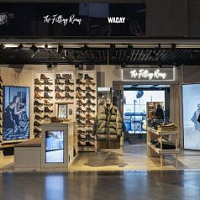
Current techniques in lighting a shoe store

Seven “sins” of the shoe business. How do owners harm the company with their own hands?

Why is it so important to work with customer reviews, analyze them and use them in your work?

How to implement sales funnels in the shoe business

Effective methods that will help improve the effectiveness of sellers
Popular
 Coach turned to Big Data analysis and won the interest of a young audience
American handbag brand Coach has planned the success of its Tabby model among a younger audience, Generation Z, by turning to big data analysis, abandoning traditional and analogue tools, such as human intuition or the ability of any executive to sense “which way the wind will blow,” writes B.O.F.
Coach turned to Big Data analysis and won the interest of a young audience
American handbag brand Coach has planned the success of its Tabby model among a younger audience, Generation Z, by turning to big data analysis, abandoning traditional and analogue tools, such as human intuition or the ability of any executive to sense “which way the wind will blow,” writes B.O.F.
 IDOL updates the concept
The IDOL brand, part of the Melon Fashion Group portfolio, opened the first flagship in an updated concept in the Aviapark shopping center in Moscow.
IDOL updates the concept
The IDOL brand, part of the Melon Fashion Group portfolio, opened the first flagship in an updated concept in the Aviapark shopping center in Moscow.
 Seven “sins” of the shoe business. How do owners harm the company with their own hands?
Why is Company X able to create a strong, profitable brand, but Company Y is struggling to make ends meet? Many people prefer to attribute success to luck, luck, or the support of strong patrons. And few people ask themselves the question: “What am I doing wrong?” Moreover, many entrepreneurs begin to harm their business from the first day of its opening. In this article, together with SR expert in the field of fashion business management and development, Maria Gerasimenko, we will look at the 7 main “sins” that business owners commit using specific examples.
Seven “sins” of the shoe business. How do owners harm the company with their own hands?
Why is Company X able to create a strong, profitable brand, but Company Y is struggling to make ends meet? Many people prefer to attribute success to luck, luck, or the support of strong patrons. And few people ask themselves the question: “What am I doing wrong?” Moreover, many entrepreneurs begin to harm their business from the first day of its opening. In this article, together with SR expert in the field of fashion business management and development, Maria Gerasimenko, we will look at the 7 main “sins” that business owners commit using specific examples.
 Current techniques in lighting a shoe store
Today, walking through the galleries of shopping centers, we see a variety of formats of offline stores. New concepts of retail spaces attract with an individual, memorable design. In a certain sense, they are an element of the show, a tool through which the buyer receives a new and interesting experience. Together with SR expert in the field of lighting technology in retail, Tatyana Ryzhova, we will look at current lighting design techniques for modern shoe stores, which we will see more and more often in new retail outlets in the near future.
Current techniques in lighting a shoe store
Today, walking through the galleries of shopping centers, we see a variety of formats of offline stores. New concepts of retail spaces attract with an individual, memorable design. In a certain sense, they are an element of the show, a tool through which the buyer receives a new and interesting experience. Together with SR expert in the field of lighting technology in retail, Tatyana Ryzhova, we will look at current lighting design techniques for modern shoe stores, which we will see more and more often in new retail outlets in the near future.
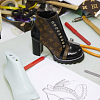 Louis Vuitton opens a new factory in Italy
Louis Vuitton has opened its second shoe factory in Italy. After opening the first one in Fiesso d'Artico in Veneto, the LVMH flagship brand has just opened a new production site dedicated to this category of footwear in the industrial zone of Civitano in the Marche region. There is also another brand production facility in Tuscany, where bags and leather accessories are produced, writes fr.fashionnetwork.com.
Louis Vuitton opens a new factory in Italy
Louis Vuitton has opened its second shoe factory in Italy. After opening the first one in Fiesso d'Artico in Veneto, the LVMH flagship brand has just opened a new production site dedicated to this category of footwear in the industrial zone of Civitano in the Marche region. There is also another brand production facility in Tuscany, where bags and leather accessories are produced, writes fr.fashionnetwork.com.
 The Euro Shoes@CAF exhibition will be held in Almaty
From March 11 to 13, the Euro Shoes@CAF (Central Asia Fashion) exhibition will be held in Almaty at the Atakent exhibition complex. The exhibition, which is the largest international event in the fashion industry in Central Asia, will present collections of clothing, shoes and accessories.
The Euro Shoes@CAF exhibition will be held in Almaty
From March 11 to 13, the Euro Shoes@CAF (Central Asia Fashion) exhibition will be held in Almaty at the Atakent exhibition complex. The exhibition, which is the largest international event in the fashion industry in Central Asia, will present collections of clothing, shoes and accessories.
 Euro Shoes will start operating on February 19 in Moscow!
The winter session of the international exhibition of footwear and accessories Euro Shoes premiere collection will be held in Moscow at the Expocenter from February 19 to 22. The organizers promise the presence of all the main participants at the exhibition, as well as new names from Europe, Asia and Russia.
Euro Shoes will start operating on February 19 in Moscow!
The winter session of the international exhibition of footwear and accessories Euro Shoes premiere collection will be held in Moscow at the Expocenter from February 19 to 22. The organizers promise the presence of all the main participants at the exhibition, as well as new names from Europe, Asia and Russia.
 American buyers couldn't buy Birkin bags and sued Hermès
French fashion house Hermès is facing a lawsuit in California from two customers who were unable to purchase exclusive Birkin bags. The fashion house is accused of unfair commercial practices.
American buyers couldn't buy Birkin bags and sued Hermès
French fashion house Hermès is facing a lawsuit in California from two customers who were unable to purchase exclusive Birkin bags. The fashion house is accused of unfair commercial practices.
 Why Rendez-Vous and Yandex Lavka released a “bread bag”
Shoe retailer Rendez-Vous announced the launch of a spring collaboration with Yandex Lavka and released a roll that resembles the shape of a woman’s handbag. This “Bread Bag” is presented in the Yandex.Lavka application at a price of 249 rubles. On the product packaging there is a promotional code for 1000 rubles, which can be spent in the Rendez-Vous network.
Why Rendez-Vous and Yandex Lavka released a “bread bag”
Shoe retailer Rendez-Vous announced the launch of a spring collaboration with Yandex Lavka and released a roll that resembles the shape of a woman’s handbag. This “Bread Bag” is presented in the Yandex.Lavka application at a price of 249 rubles. On the product packaging there is a promotional code for 1000 rubles, which can be spent in the Rendez-Vous network.
 Camper has released innovative sneakers - designers
Spanish brand Camper's new Roku sneaker features six interchangeable components to create up to 64 different looks and color combinations. Roku means "six" in Japanese.
Camper has released innovative sneakers - designers
Spanish brand Camper's new Roku sneaker features six interchangeable components to create up to 64 different looks and color combinations. Roku means "six" in Japanese.
 Christian Louboutin presented a collection in a cowboy style
At the Loubi Show in Paris, the French luxury brand Christian Louboutin presented its fall 2024 collection, following the trend - in the style of the Wild West. It included cowboy boots and rhinestone loafers.
Christian Louboutin presented a collection in a cowboy style
At the Loubi Show in Paris, the French luxury brand Christian Louboutin presented its fall 2024 collection, following the trend - in the style of the Wild West. It included cowboy boots and rhinestone loafers.
 Turkish brand Vaneda on Euro Shoes
Street style, sport, outdoor, military – the main style directions of footwear of the company from Turkey
Turkish brand Vaneda on Euro Shoes
Street style, sport, outdoor, military – the main style directions of footwear of the company from Turkey
 Fashion Week takes place in Moscow
Fashion Week takes place in the Russian capital. Events include fashion shows, markets where you can purchase clothes, bags and accessories, and a B2B Showroom for fashion industry professionals.
Fashion Week takes place in Moscow
Fashion Week takes place in the Russian capital. Events include fashion shows, markets where you can purchase clothes, bags and accessories, and a B2B Showroom for fashion industry professionals.
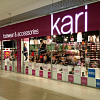 Kari accuses Zenden of unfair competition and is suing the FAS
The largest Russian shoe chain, Kari, appealed to the Moscow Arbitration Court to declare the actions of the Federal Antimonopoly Service (FAS) illegal, writes RBC.
Kari accuses Zenden of unfair competition and is suing the FAS
The largest Russian shoe chain, Kari, appealed to the Moscow Arbitration Court to declare the actions of the Federal Antimonopoly Service (FAS) illegal, writes RBC.
 Fashion trends Fall-Winter 2023/24 for commercial footwear purchases
Permanent contributor to Shoes Report. Elena Vinogradova, an expert in sales and purchases in the fashion business, prepared an overview of the trends for the autumn-winter 2023/24 season especially for us.
Fashion trends Fall-Winter 2023/24 for commercial footwear purchases
Permanent contributor to Shoes Report. Elena Vinogradova, an expert in sales and purchases in the fashion business, prepared an overview of the trends for the autumn-winter 2023/24 season especially for us.
 MSCHF and Crocs launch "Big Yellow Boots"
Creator of the Big Red Boots, Brooklyn brand MSCHF has teamed up with American plastic clog and sandal brand Crocs for another oversized shoe. The new Big Yellow Boots will go on sale on August 9th.
MSCHF and Crocs launch "Big Yellow Boots"
Creator of the Big Red Boots, Brooklyn brand MSCHF has teamed up with American plastic clog and sandal brand Crocs for another oversized shoe. The new Big Yellow Boots will go on sale on August 9th.
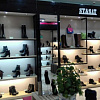 Five rules of professional lighting for a shoe store - something that is relevant in any season
When developing a lighting concept for shoe retailers, it is important to take into account not only the history of the brand, the architectural content of the premises, the target audience of the stores, but also the seasonality of the goods. With the onset of the cold season, client preferences change: bright weightless shoes are replaced by more massive models in discreet dark colors. Despite significant differences in summer and winter collections, the overall philosophy of the brand, its recognition should remain unchanged at any time of the year. Tatyana Ryzhova, an SR lighting expert in fashion retail, has identified five basic rules for a competent lighting concept for a shoe store for readers of the magazine, which will help to present winter assortment to customers in a winning way.
Five rules of professional lighting for a shoe store - something that is relevant in any season
When developing a lighting concept for shoe retailers, it is important to take into account not only the history of the brand, the architectural content of the premises, the target audience of the stores, but also the seasonality of the goods. With the onset of the cold season, client preferences change: bright weightless shoes are replaced by more massive models in discreet dark colors. Despite significant differences in summer and winter collections, the overall philosophy of the brand, its recognition should remain unchanged at any time of the year. Tatyana Ryzhova, an SR lighting expert in fashion retail, has identified five basic rules for a competent lighting concept for a shoe store for readers of the magazine, which will help to present winter assortment to customers in a winning way.
 I doubt and object: how to find an approach to difficult clients?
How good and serene would be the work of a salesperson if the customers were calm, cheerful, always knew exactly what they wanted, and bought, bought, bought! It is a pity that this is possible only in dreams. Therefore, we will not dream, but we will act. Together with Maria Gerasimenko, a permanent author of SR, we understand the doubts and objections of buyers and build a strategy for working with them. Our expert pays special attention to the two main objections of buyers, on which 82% of sales are lost.
I doubt and object: how to find an approach to difficult clients?
How good and serene would be the work of a salesperson if the customers were calm, cheerful, always knew exactly what they wanted, and bought, bought, bought! It is a pity that this is possible only in dreams. Therefore, we will not dream, but we will act. Together with Maria Gerasimenko, a permanent author of SR, we understand the doubts and objections of buyers and build a strategy for working with them. Our expert pays special attention to the two main objections of buyers, on which 82% of sales are lost.
 EURO SHOES presents an updated section of the GLOBAL SHOES exhibition with collections of shoe and bag brands from Asian countries
EURO SHOES premiere collection is expanding. Along with the traditional pool of leading European footwear brands from Germany, Spain, Italy and Turkey, several dozen footwear and bag brands from the Middle Kingdom will be presented in the GLOBAL SHOES section at the Moscow Expocentre from August 29 to September 1.
EURO SHOES presents an updated section of the GLOBAL SHOES exhibition with collections of shoe and bag brands from Asian countries
EURO SHOES premiere collection is expanding. Along with the traditional pool of leading European footwear brands from Germany, Spain, Italy and Turkey, several dozen footwear and bag brands from the Middle Kingdom will be presented in the GLOBAL SHOES section at the Moscow Expocentre from August 29 to September 1.
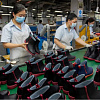 World Footwear Yearbook: Global footwear production reaches 23,9 billion pairs and is back to pre-pandemic levels
The Portuguese association of shoe manufacturers APICCAPS published the 13th edition of the international statistical bulletin World Footwear Yearbook for 2023, according to which in 2022 the production and export of shoes worldwide increased by 7,6% and 9%, respectively, and the world production of shoes reached 23,9 billion couples and returned to pre-pandemic levels.
World Footwear Yearbook: Global footwear production reaches 23,9 billion pairs and is back to pre-pandemic levels
The Portuguese association of shoe manufacturers APICCAPS published the 13th edition of the international statistical bulletin World Footwear Yearbook for 2023, according to which in 2022 the production and export of shoes worldwide increased by 7,6% and 9%, respectively, and the world production of shoes reached 23,9 billion couples and returned to pre-pandemic levels.
 Rostov footwear brand Novak presented a collection of sneakers and sneakers
In the spring-summer 2023 season, the Rostov-on-Don shoe brand Novak presented a cute collection of sneakers and sneakers for every day. The upper of the shoe is made of genuine leather, suede, nubuck, the sole is made of light EVA.
Rostov footwear brand Novak presented a collection of sneakers and sneakers
In the spring-summer 2023 season, the Rostov-on-Don shoe brand Novak presented a cute collection of sneakers and sneakers for every day. The upper of the shoe is made of genuine leather, suede, nubuck, the sole is made of light EVA.
 Jacquemus x Nike collaboration released
The second collaboration between Jacquemus and Nike, which has been talked about so much, is finally out. The appearance of the couple for many was a surprise. The model of Nike Air Force 1 sneakers, which was taken as the basis of the new collection, has undergone significant changes.
Jacquemus x Nike collaboration released
The second collaboration between Jacquemus and Nike, which has been talked about so much, is finally out. The appearance of the couple for many was a surprise. The model of Nike Air Force 1 sneakers, which was taken as the basis of the new collection, has undergone significant changes.
 Crocs releases a collaboration with Barbie
If Barbie ditched heels and wore crocs, they would be pink. It was this collection in pink that was released by the American brand of plastic clogs Crocs, for the release of the film "Barbie" in the United States.
Crocs releases a collaboration with Barbie
If Barbie ditched heels and wore crocs, they would be pink. It was this collection in pink that was released by the American brand of plastic clogs Crocs, for the release of the film "Barbie" in the United States.
 Japanese BAPE takes to the catwalk MSCHF Big Red Boots
The story of Brooklyn brand MSCHF's oversized rubber boots continues. The last time they made noise in the auditorium was at the Rick Owens menswear show. Now they have already appeared on the podium.
Japanese BAPE takes to the catwalk MSCHF Big Red Boots
The story of Brooklyn brand MSCHF's oversized rubber boots continues. The last time they made noise in the auditorium was at the Rick Owens menswear show. Now they have already appeared on the podium.
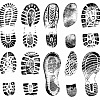 Shoe educational program: what shoe soles are made of
“What is the difference between TEP and EVA? What does tunit promise me? Is PVC glue? What is the sole of these shoes made of? ”- the modern buyer wants to know everything. In order not to smash his face in front of him and be able to explain whether such a sole suits him in soles, carefully read this article. In it, process engineer Igor Okorokov tells what materials the soles of shoes are made of and what makes each of them so good.
Shoe educational program: what shoe soles are made of
“What is the difference between TEP and EVA? What does tunit promise me? Is PVC glue? What is the sole of these shoes made of? ”- the modern buyer wants to know everything. In order not to smash his face in front of him and be able to explain whether such a sole suits him in soles, carefully read this article. In it, process engineer Igor Okorokov tells what materials the soles of shoes are made of and what makes each of them so good.
 How to set prices that will earn
Some businessmen still confuse the concept of margin with the concept of trade margins and set prices for their goods, guided solely by the example of competitors. No wonder they go broke! Analyst at the Academy of Retail Technologies Maxim Gorshkov gives several tips and formulas with which you can set not only ruinous, but also profitable prices.
How to set prices that will earn
Some businessmen still confuse the concept of margin with the concept of trade margins and set prices for their goods, guided solely by the example of competitors. No wonder they go broke! Analyst at the Academy of Retail Technologies Maxim Gorshkov gives several tips and formulas with which you can set not only ruinous, but also profitable prices.
 Sales of shoes and accessories: effective techniques for business rhetoric
Which speech modules are effective in communicating with potential and current customers of shoe stores, and which are not, Anna Bocharova, a business consultant, knows.
Sales of shoes and accessories: effective techniques for business rhetoric
Which speech modules are effective in communicating with potential and current customers of shoe stores, and which are not, Anna Bocharova, a business consultant, knows.
 We form the salary of sellers: expert advice
“How do you charge your consultants for personal or general sales?” Is one of the most popular questions causing a lot of controversy and gossip on the online forums of retail business owners. Indeed, how to properly form the earnings of sellers? But what about bonuses, where to get a sales plan from, do employees allow them to buy goods at discounted stores? In search of truth, the Shoes Report turned to a dozen shoe retailers, but no company wanted to disclose its motivation system - the process of its development was too complicated and individual. Then we asked four business consultants, and finally became convinced that the topic of seller motivation is very complex, because even our experts could not come to a common opinion.
We form the salary of sellers: expert advice
“How do you charge your consultants for personal or general sales?” Is one of the most popular questions causing a lot of controversy and gossip on the online forums of retail business owners. Indeed, how to properly form the earnings of sellers? But what about bonuses, where to get a sales plan from, do employees allow them to buy goods at discounted stores? In search of truth, the Shoes Report turned to a dozen shoe retailers, but no company wanted to disclose its motivation system - the process of its development was too complicated and individual. Then we asked four business consultants, and finally became convinced that the topic of seller motivation is very complex, because even our experts could not come to a common opinion.
 Technology Selling Issues
There is nothing worse than meeting the buyer with the words “Hello, can I help you with something?”, Because the seller works in the store just to help. Criticizing this well-established pattern of communication with the buyer, Andrei Chirkarev, business coach for effective sales and the founder of the New Economy project, shares the technology of truly selling issues with readers of Shoes Report.
Technology Selling Issues
There is nothing worse than meeting the buyer with the words “Hello, can I help you with something?”, Because the seller works in the store just to help. Criticizing this well-established pattern of communication with the buyer, Andrei Chirkarev, business coach for effective sales and the founder of the New Economy project, shares the technology of truly selling issues with readers of Shoes Report.
 The whole truth about Bayer. Who is he and how to become one?
Bayer is no longer a new, but still a popular and sought-after profession. It’s fashionable to be a buyer. Buyers are at the origins of the emergence and development of trends. If the designer offers his vision of fashion in the season, then the buyer selects the most interesting commercial ideas. It is on buyers that the policy of sales of stores and what, in the end, the buyer will wear depends on. This profession is surrounded by a magical fleur, often associated with a lack of understanding of what exactly is the work of a buyer.
The whole truth about Bayer. Who is he and how to become one?
Bayer is no longer a new, but still a popular and sought-after profession. It’s fashionable to be a buyer. Buyers are at the origins of the emergence and development of trends. If the designer offers his vision of fashion in the season, then the buyer selects the most interesting commercial ideas. It is on buyers that the policy of sales of stores and what, in the end, the buyer will wear depends on. This profession is surrounded by a magical fleur, often associated with a lack of understanding of what exactly is the work of a buyer.
 Fur, and not only: types of lining
In the production of winter footwear, various materials are used that are designed to retain heat and meet the requirements of consumers: natural sheepleather, artificial fur, artificial fur from natural wool and others. All types of lining fur have their own advantages and disadvantages. Let's consider the properties of each of them.
Fur, and not only: types of lining
In the production of winter footwear, various materials are used that are designed to retain heat and meet the requirements of consumers: natural sheepleather, artificial fur, artificial fur from natural wool and others. All types of lining fur have their own advantages and disadvantages. Let's consider the properties of each of them.
 Retail Arithmetic
Before you begin to solve specific problems, you need to find out how accurately all the leaders of your company understand the basic terminology of retail.
Retail Arithmetic
Before you begin to solve specific problems, you need to find out how accurately all the leaders of your company understand the basic terminology of retail.
 How to fire a worker without tears, scandal and trial
Sooner or later, any manager is faced with the need to part with an employee. Properly and on time the dismissal procedure will save the company money, and the boss himself - nerves and time. But why sometimes, knowing that a break in relations is inevitable, we put off the decision for months?
How to fire a worker without tears, scandal and trial
Sooner or later, any manager is faced with the need to part with an employee. Properly and on time the dismissal procedure will save the company money, and the boss himself - nerves and time. But why sometimes, knowing that a break in relations is inevitable, we put off the decision for months?


